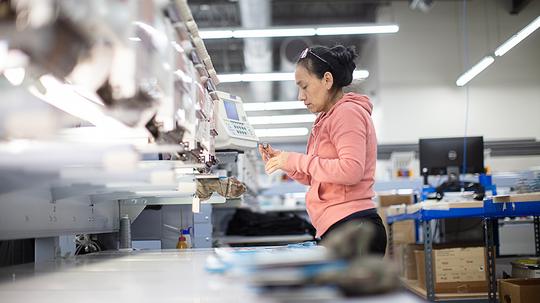
Despite two years of unexpected industry challenges ranging from COVID-19 shutdowns to worker shortages to inflation, manufacturing leaders are feeling good about the future of their industry, with 87% indicating optimism that their companies will continue to perform well in the coming years.
That’s according to the 2021 Enterprise Minnesota State of Manufacturing report, which surveyed 400 manufacturing executives across Minnesota. In addition to positive future outlooks, executives reported seeing a rebound in business revenue and profitability last year compared to 2020. According to Julie Whitney, commercial banking manager at Bremer Bank, a contributing factor to this rebound is that many manufacturers are investing in new equipment.
“Compared to the 2020 survey where only 21% of executives indicated any expectation of a gross revenue increase, the 2021 report shows a substantially more positive outlook, with 51% of manufacturing executives anticipating higher revenue,” said Whitney. “Over this survey’s lifetime, I have observed firsthand a consistent correlation between new equipment purchases and revenue growth.”
Forty-one percent of manufacturers anticipated their profits would increase this year, with 44% also expecting a matching increase in capital expenditures.
New equipment spurs productivity and employee satisfaction while encouraging competitive edge
For manufacturers, one of the most rewarding, cost-effective options for capital expenditure investments is new equipment, as benefits range beyond profit increase. One of these benefits is improved employee morale and safety. In the 2021 survey, 62% of manufacturers reported unfilled positions at their companies, with 87% identifying difficulties in attracting candidates.
According to Whitney, new equipment can be a great way to attract employees by providing better working conditions and helping workers feel equipped to excel at their jobs safely and effectively. Updated equipment can also provide opportunities to learn new skills and programs, supporting an employee’s career advancement. If a company is especially struggling with addressing the labor shortage, robotics and automation serve as a great tool for attracting and retaining valuable talent. New, state-of-the-art equipment can help automate processes and move talent out of repetitive, less-rewarding tasks and into more interesting and fulfilling roles.
Investing in new technology allows businesses to maintain their competitive edge by reducing manual tasks, operating with better energy efficiency, and completing jobs more quickly and with higher quality. Customers also benefit, as manufacturers can more easily offer additional services while adapting more quickly to changing industry requirements and customer preferences. Increased productivity allows for greater capacity to take on additional customers.
Purchasing new equipment comes with peace of mind, as standard machinery typically includes warranties that cover replacement parts and support from the vendor. Investing in new technology can also qualify a business for various financial write-offs, tax credits and possibly even grants. Low-cost financing programs are available as well through the Small Business Association and local and state economic development entities, while specialized options like equipment finance loans or financing a purchase over the useful life of the equipment are also options, based on a manufacturer’s cashflow and industry.
If you work in the manufacturing industry, audit your equipment and make a plan to modernize it over time. Your bottom line will benefit from it.
Bremer Financial Corporation is a privately held, regional financial services company with $16 billion in assets. Founded in 1943 by Otto Bremer, the company is headquartered in St. Paul, Minnesota, and provides a comprehensive range of banking, mortgage, investment, wealth management, and insurance products and services.